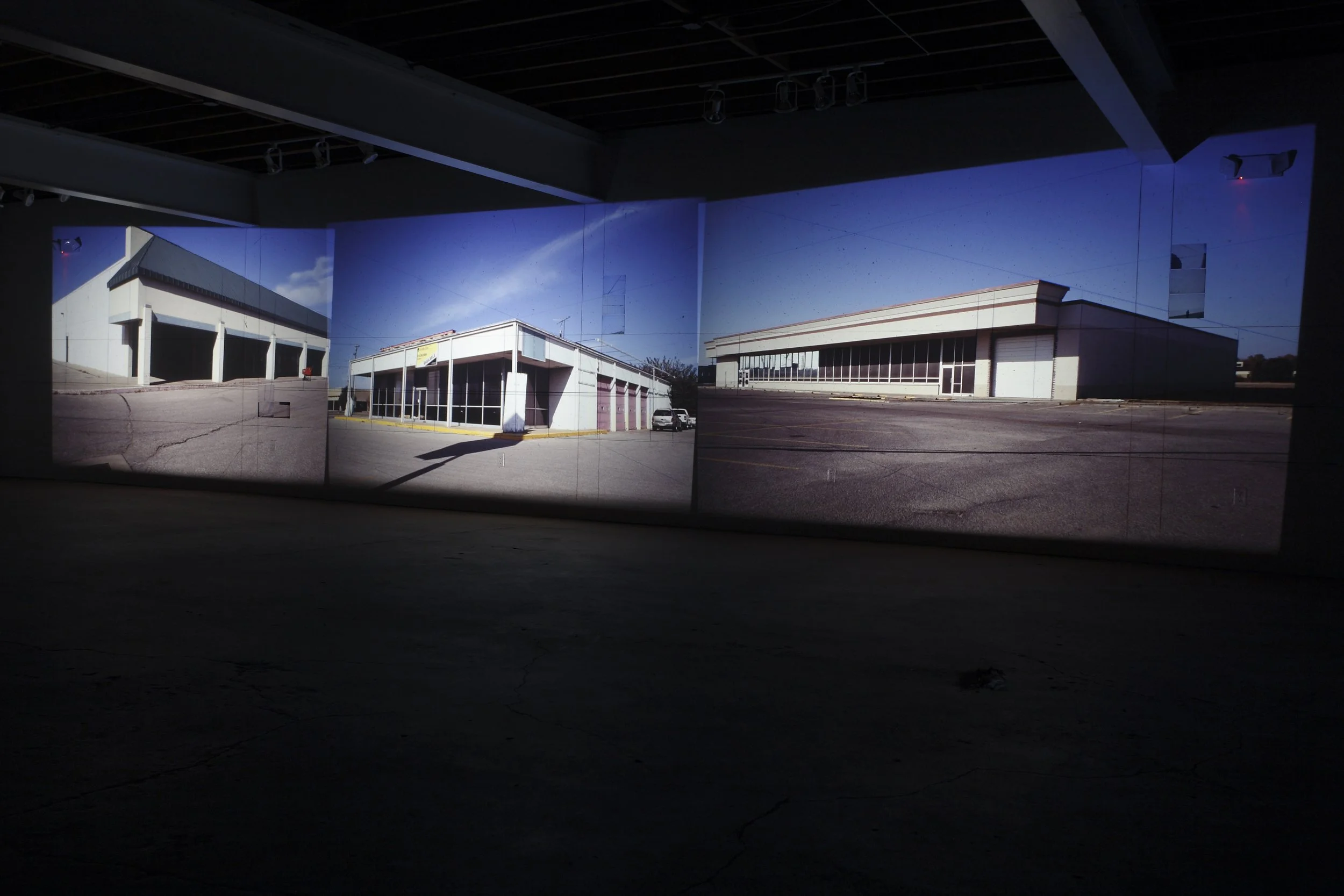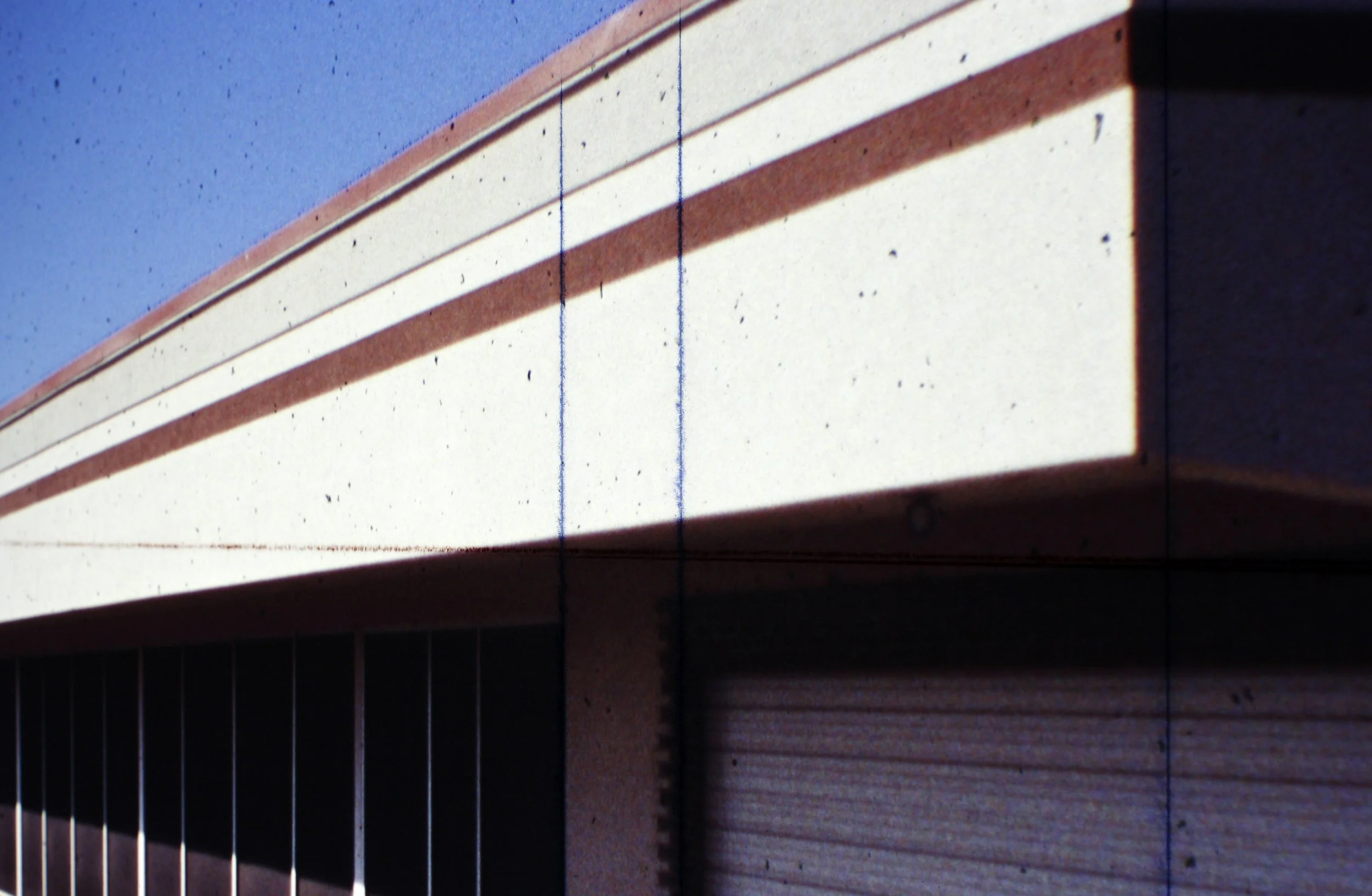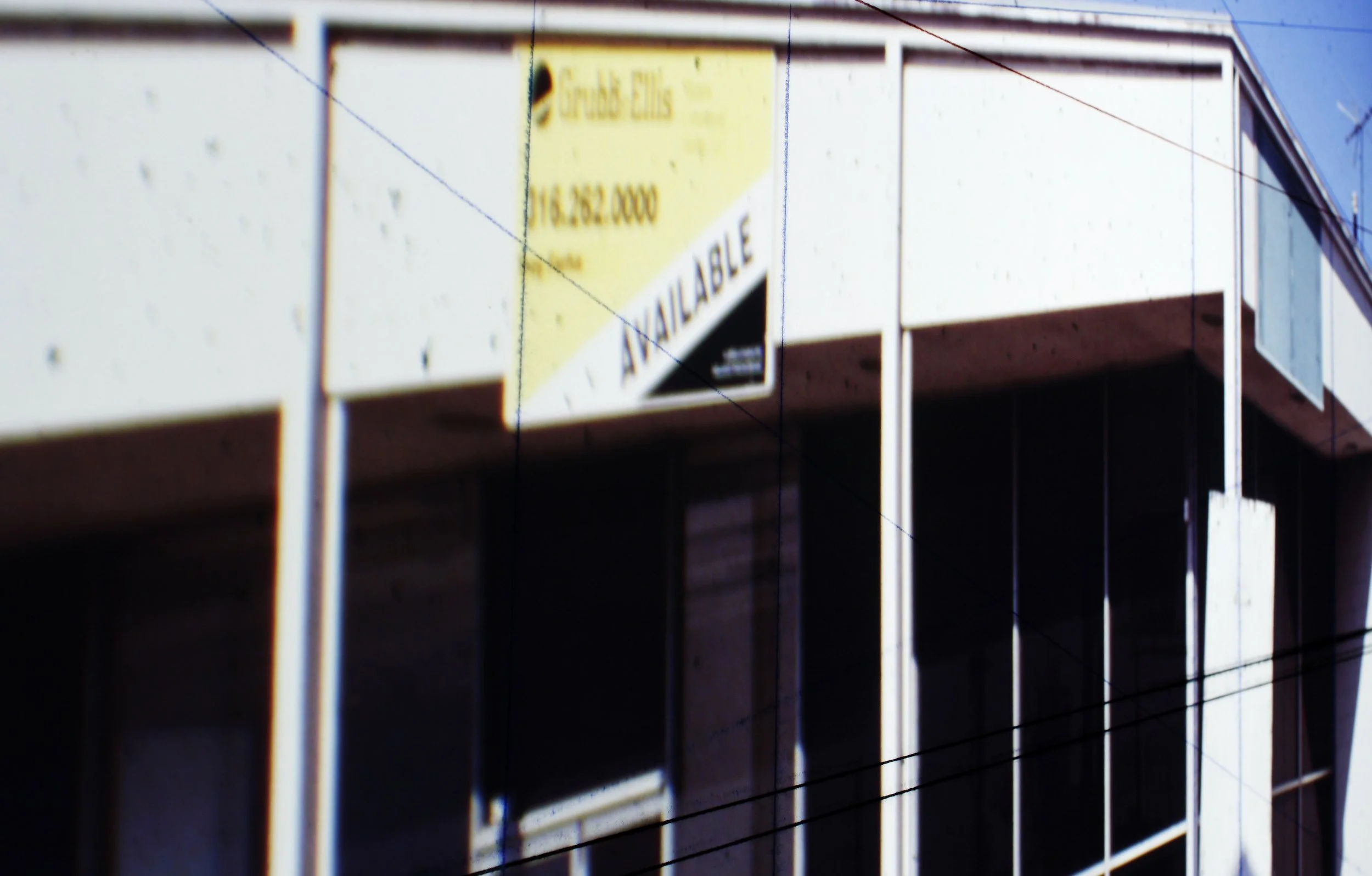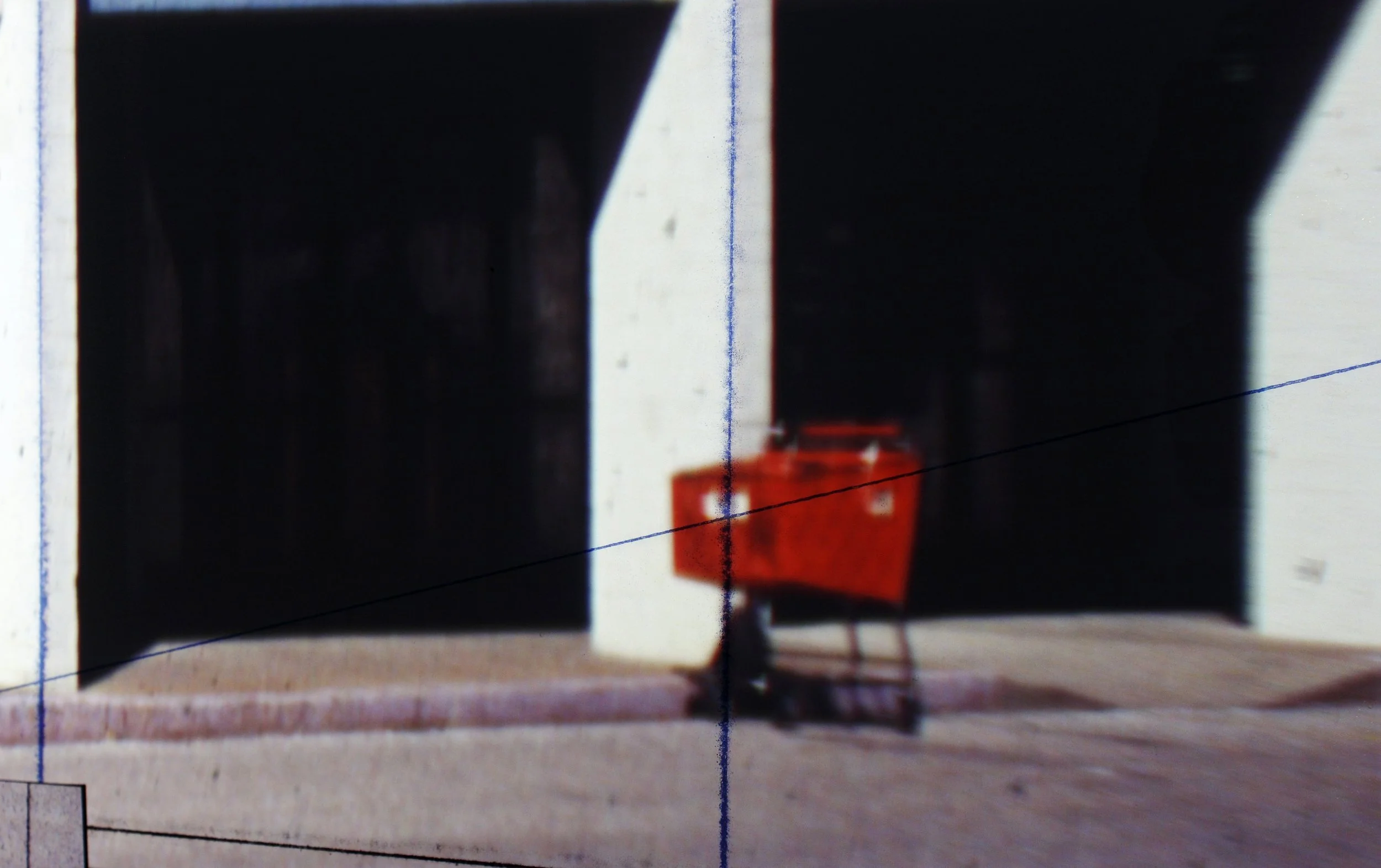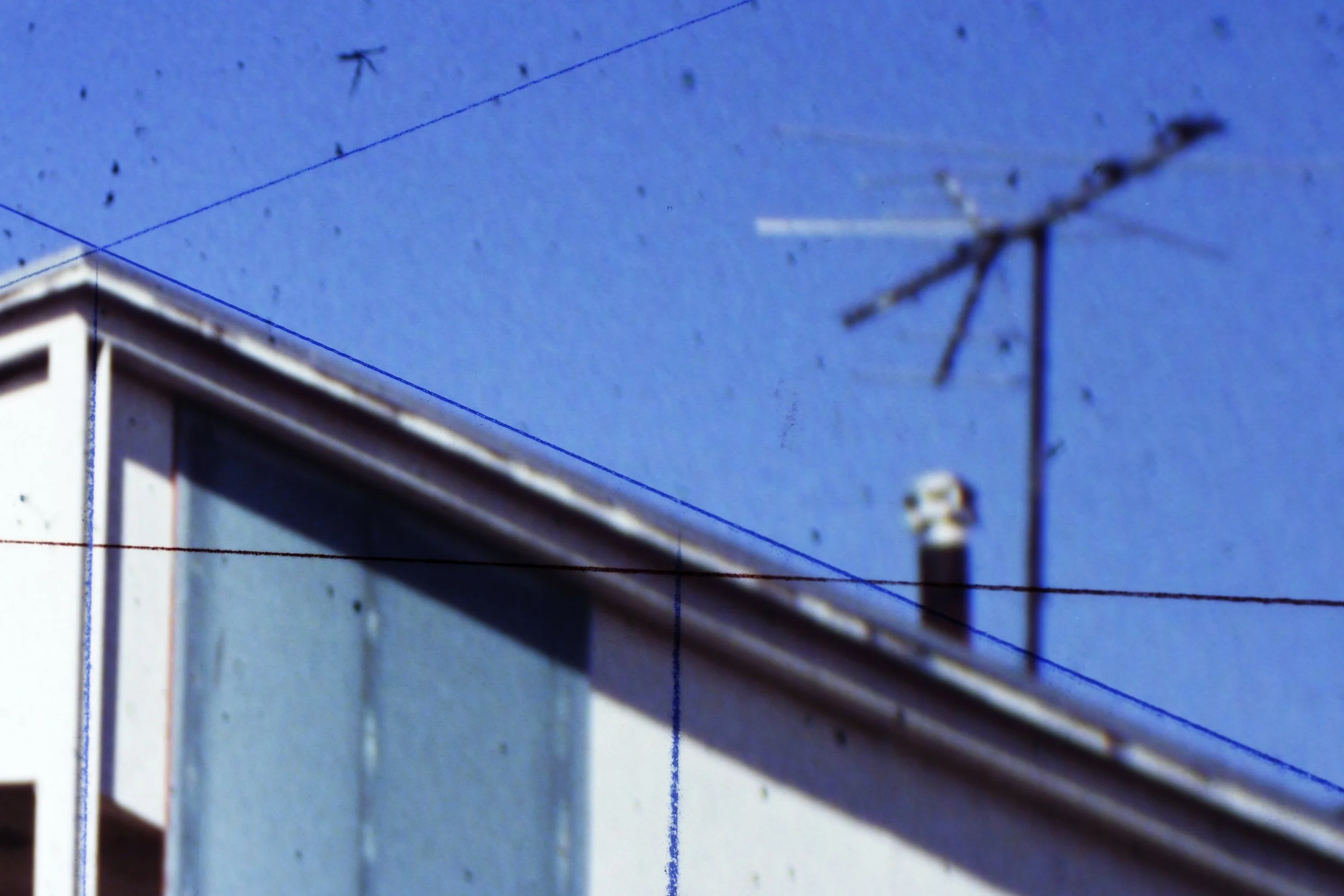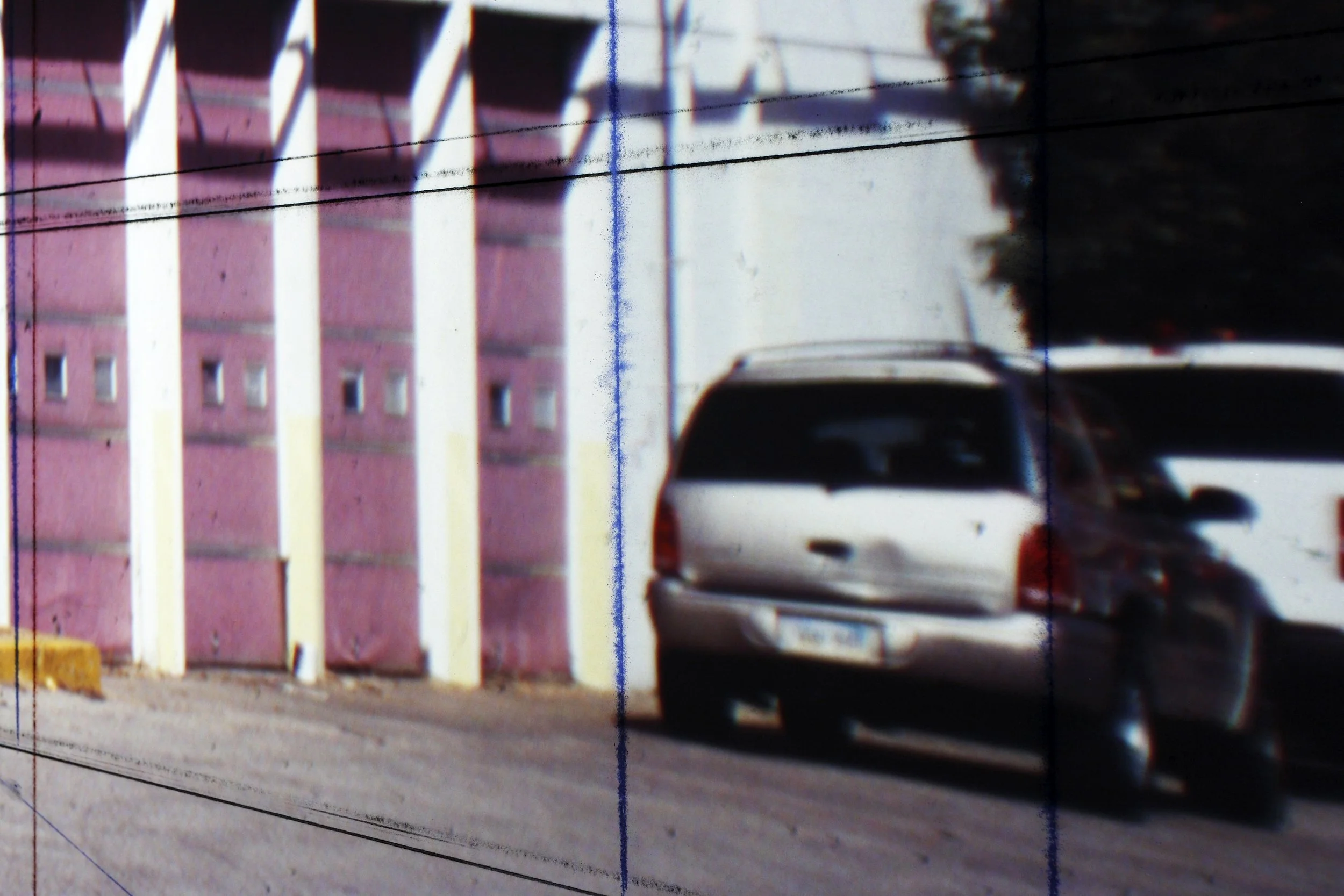Snap-Line Graffiti
2008
Snap-Line Graffiti was a collaboration with A.P. Vague. We created drawings utilizing construction snap-lines on public structures in disuse. Our work typically involved photographing the empty, banal architecture of disused buildings in our hometown of Wichita, KS. We responded to the large-scale compositions of Midwestern America with a special consideration for the social processes of loss and failed commerce.
This work is inspired by the concepts of reductivist aesthetics, graffiti, and the hybridization of cultures. To us, graffiti functions as a way of claiming or interpreting a site. It can be thought of as an attempt to undermine the established logic of a location with the hope of allowing new relationships to come to the foreground. While carrying associations with “low” culture--crime, urban decay--the practice of graffiti serves as a type of indicator of locational identity in disused environments.
Our response to this type of site-specific art is a mixture of graffiti and post-minimal conceptualism. Our current snap-line drawings include simple angular and linear compositions which respond to the surfaces of public structures. The work exists in the public space where the original snap-line drawing is situated and in the gallery space as a type of index or plan. The gallery work includes further vertical and horizontal snap-line compositions on the walls themselves which in turn correspond to projected slides of the proposed public locations.
Our snap-line graffiti is an attempt to reclaim or reinterpret a disused site by emphasizing its established logic. The snap-line brings about associations with planning and construction, and it is our hope that by reinterpreting the site we are establishing a dialogue in which the various social issues pertaining to the site might be discussed.
But while there might be that hope in the work we acknowledge the impotence of this sort of gesture to bring about palpable change. The snap-lines themselves are ephemeral objects, and unlike typical graffiti, they are not intended to have a lasting or damaging effect. The snap-line is used to locate a cut, a beam, or a connection in construction. In our work, the snap-line is used to signify a temporary plan for an unstated type for public action.
In the gallery, the projected slides are immaterial objects as well, but their placement adheres to the logic of the snap-lines laid out across the walls. Much like the graffiti on the actual sites, these snap-lines also call for a reinterpretation of the space, which initiates a dialogue regarding the arbitrary standards of contemporary aesthetics, the rhetorical nature of conceptual art, and the inability for a work of art to reach beyond the limitations of its own discourse.
The snap-lines wear away in the weather, the slide projectors are turned off, and the walls are repainted. The social changes we map as a collective are inherently outside of our individual control, functioning as aspects of an untold public history. Our work is a response to this history and a type of social document that exists in public and discursive space.
